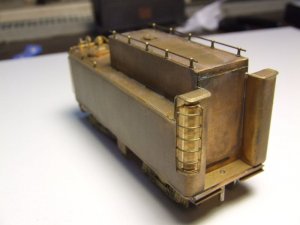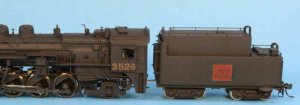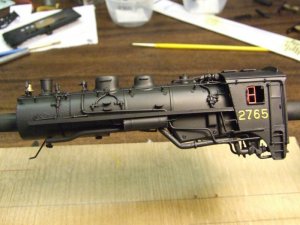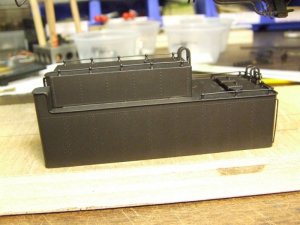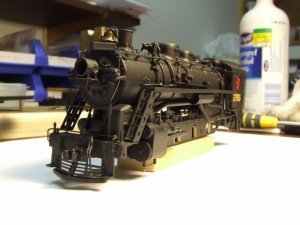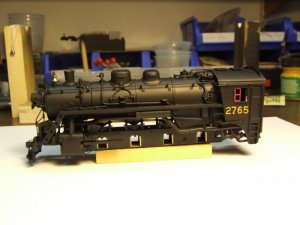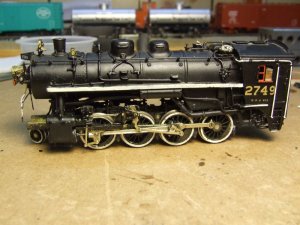I thought I had better give a little update on my N-5-d rebuild.
Thanks to ending up with a bad case of the flu for just about two weeks I have not had much of a chance to work on it.:cry: Also seeing as winter will be here soon in the north I had a few things to take care of before it gets too cold.

The good news is I did manage to get a coat of black paint on all the parts except for the tender trucks and the side rods/valve gear parts. I ended up having to paint the boiler two times thanks to some water staying trapped under the sand dome. It decided to make an appearance when I was spraying the second coat.wall1 This meant stripping the boiler and starting over again.:curse: The second time around things went fine.
I plan to paint the cab windows red this weekend as well as some hand valves and give the raised cab numbers some CN yellow #11 paint. I will also be putting the drive back together so I can paint the side rod and valve gear in place with the wheels turning slowly.
I was hoping to do the decaling this weekend but have found out Black Cat Publishing has come out with a new set of CNR steam decals that are more correct than the Microscale ones. The good news is Black Cat is located here in Canada so the new decals should be here in a week.:mrgreen:
Once I have the decals I will be able to shot the clear coat. I am thinking of using flat clear for the smokebox and firebox. A satin/flat mix for the boiler and straight satin for the cab and tender. This should give the black a different look on different parts of the locomotive. Weathering will do the rest.
Once my camera batteries are charged I will take a few pictures of the painted parts as they are now and post them.
Wayne R
 :-D
:-D

 :grin:
:grin: